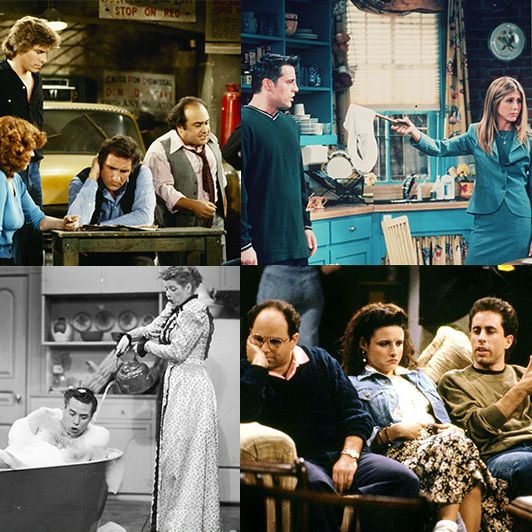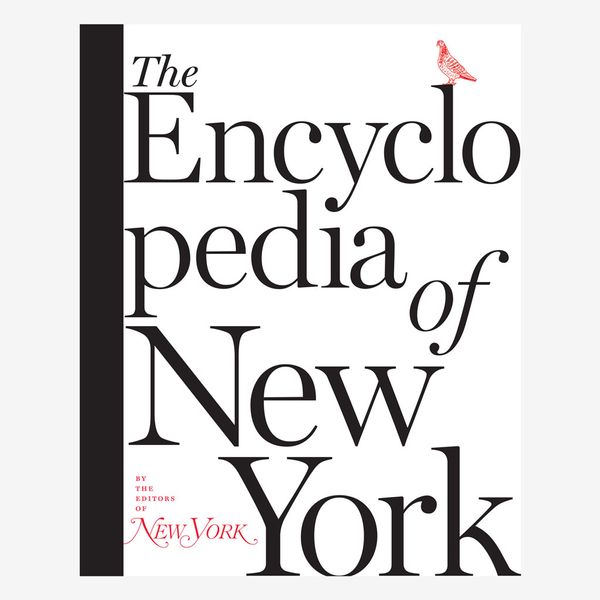
In November 1947, the DuMont television network aired the fifteen-minute premiere of a show called Mary Kay and Johnny. It was the first American television sitcom, appearing several months before the first officially programmed season of network television, and it was unlike anything viewers had seen before. Most early experimental shows were either adaptations of radio programming, coverage of sporting events, variety shows, or stand-alone fictional stories like those on Kraft Television Theatre. But Mary Kay and Johnny returned every night to the same two characters (played by real-life couple Mary Kay and Johnny Stearns) in the same tiny New York apartment. It was an ongoing comedy about an American family at home and featured short, funny stories about domestic life and minor marital squabbles. In the show’s one surviving episode, Johnny chides Mary Kay for buying a small brush from a door-to-door salesman, only to get suckered into buying a much more expensive vacuum when the salesman returns.
Like the best sitcoms, Mary Kay and Johnny balanced small, easily resolved conflicts with a longer-term fondness for its lead characters, and cramped New York apartments like theirs would become a familiar, stagelike setting for dozens of sitcoms over the next several decades. Mary Kay and Johnny were supposed to live in Greenwich Village, but the show was broadcast live from a small set in the Wanamaker’s department store at 770 Broadway. (The set had only one room, which had to be redecorated depending on whether the day’s episode called for the living room or the bedroom.)
That idea, the small residential space serving as a regular backdrop for mundane but meaningful, humorous stories about everyday life, became a foundational piece of sitcom DNA. It’s there in The Goldbergs, the long-running radio sitcom that transitioned to television in 1949, and in The Honeymooners, the 1955 Jackie Gleason sitcom about a New York bus driver. And the city continued as a go-to setting even after most TV production moved to Los Angeles and sitcoms branched out into workplace backdrops and single-cam setups. I Love Lucy, set on the Upper East Side through most of its run, was shot entirely in California.
In its seven-plus decades, the sitcom has uncannily mirrored, and shaped, public perceptions of New York City. Lucy and Ricky Ricardo, in later seasons, moved from Manhattan to the suburbs like hundreds of thousands of New Yorkers did. During the urban-decay years, angry white conservatism in Queens made itself known on All in the Family, and as Black Americans made their way into the upper-middle class, so too did George and Louise Jefferson, movin’ on up from Queens to Manhattan. The 1970s impulse toward social conscience, told through two generations at a Brooklyn high school, made itself seen on Welcome Back, Kotter.
Since then, sitcoms have helped America reconceive New York not as somewhere to get stabbed but as a place where you could live your best life. In 1989, Seinfeld began to promulgate the idea that New York City existence was principally about having wacky, if venal, neighbors, and it conveyed local references— H&H bagels, black-and-white cookies, subway seat-stealers, George Steinbrenner as perpetual white noise—to a national audience. Jerry Seinfeld once described the premise of the show like this: “In New York, you can do nothing, and it’s very entertaining.”
Starting in 1994, the six friends of Friends took that premise further, conveying merely by their existence that New York was the place you ought to live if you wanted to enjoy your young adulthood. Never mind that the characters live in apartments their careers could not possibly pay for; never mind that they seem to work half as much as any actual New Yorker with a job does. The world’s teenagers saw their lifestyle—and still do in reruns—and liked it, and upon graduation, they and their futons began to descend upon Murray Hill and Boerum Hill and Carnegie Hill in droves.
As those young people reach thirty or so, another show in endless syndication often starts to resonate with them: Sex and the City, about another tight-knit group, this time four single women seeking love. They too live beyond their ostensible means; their New York is principally built on commerce and glitz, a fantasy of pink cocktails, over-the-top fashion, and the social whirl, somehow undergirded by a mysteriously substantial income. Yet it again (like its millennial successor, Girls) is attuned to certain aspects of real-life urban existence: Your closest friends become a family of choice, and New York can, against all evidence, be conquered into livability.
Source photos (top image): Columbia TriStar Television/Everett Collection (The Jeffersons); Monty Brinton/CBS via Getty Images (How I Met Your Mother); Chris Haston/NBC/Everett Collection (Will & Grace); courtesy Everett Collection (The Honeymooners); Moviestore Collection Ltd./Alamy Stock Photo (The Goldbergs); Collection Christophel/NBC Universal/Alamy Stock Photo (30 Rock); p. 269, Walt Disney Television/ABC Photo Archives/Getty Images (Taxi); Getty Images (Friends); FPG/Archive Photos/Getty Images (I Love Lucy); Castle Rock Entertainment/Everett Collection (Seinfeld); HBO/courtesy: Everett Collection (Sex and the City); Bettmann/Contributor (All in the Family)



